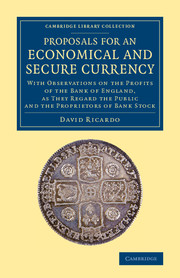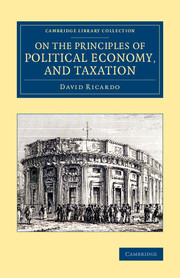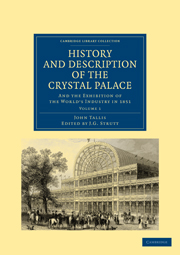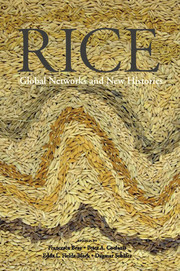Refine search
Actions for selected content:
26946 results in Economic history
Introduction
-
-
- Book:
- Rice
- Published online:
- 05 February 2015
- Print publication:
- 19 February 2015, pp 1-36
-
- Chapter
- Export citation
Copyright page
-
- Book:
- Rice
- Published online:
- 05 February 2015
- Print publication:
- 19 February 2015, pp iv-iv
-
- Chapter
- Export citation
5 - Promiscuous Transmission and Encapsulated Knowledge: A Material-Semiotic Approach to Modern Rice in the Mekong Delta
- from Part I - Purity and Promiscuity
-
-
- Book:
- Rice
- Published online:
- 05 February 2015
- Print publication:
- 19 February 2015, pp 118-137
-
- Chapter
- Export citation
2 - Rice, Sugar, and Livestock in Java, 1820–1940: Geertz’s Agricultural Involution 50 Years On
- from Part I - Purity and Promiscuity
-
-
- Book:
- Rice
- Published online:
- 05 February 2015
- Print publication:
- 19 February 2015, pp 56-83
-
- Chapter
- Export citation
15 - Commodities and Anti-Commodities: Rice on Sumatra 1915–1925
- from Part III - Power and Control
-
-
- Book:
- Rice
- Published online:
- 05 February 2015
- Print publication:
- 19 February 2015, pp 335-354
-
- Chapter
- Export citation
Prophet of Perspective: Thomas K. McCraw
-
- Journal:
- Business History Review / Volume 89 / Issue 1 / Spring 2015
- Published online by Cambridge University Press:
- 06 February 2015, pp. 129-153
- Print publication:
- Spring 2015
-
- Article
- Export citation

Origins of the European Economy
- Communications and Commerce AD 300–900
-
- Published online:
- 05 February 2015
- Print publication:
- 17 January 2002

Proposals for an Economical and Secure Currency
- With Observations on the Profits of the Bank of England, as They Regard the Public and the Proprietors of Bank Stock
-
- Published online:
- 05 February 2015
- Print publication:
- 01 January 2015
- First published in:
- 1816

On the Principles of Political Economy, and Taxation
-
- Published online:
- 05 February 2015
- Print publication:
- 01 January 2015
- First published in:
- 1817

The Diaries of Edward Pease
- The Father of English Railways
-
- Published online:
- 05 February 2015
- Print publication:
- 13 June 2013

The Great Divergence Reconsidered
- Europe, India, and the Rise to Global Economic Power
-
- Published online:
- 05 February 2015
- Print publication:
- 29 January 2015

History and Description of the Crystal Palace
- and the Exhibition of the World’s Industry in 1851
-
- Published online:
- 05 February 2015
- Print publication:
- 19 May 2011
- First published in:
- 1854

Rice
- Global Networks and New Histories
-
- Published online:
- 05 February 2015
- Print publication:
- 19 February 2015
5 - Markets versus climate in Europe and India
-
- Book:
- The Great Divergence Reconsidered
- Published online:
- 05 February 2015
- Print publication:
- 29 January 2015, pp 119-142
-
- Chapter
- Export citation
Part III - Synthesis and interpretation
-
- Book:
- The Great Divergence Reconsidered
- Published online:
- 05 February 2015
- Print publication:
- 29 January 2015, pp 143-144
-
- Chapter
- Export citation
Index
-
- Book:
- The Great Divergence Reconsidered
- Published online:
- 05 February 2015
- Print publication:
- 29 January 2015, pp 226-231
-
- Chapter
- Export citation
7 - Conclusions
-
- Book:
- The Great Divergence Reconsidered
- Published online:
- 05 February 2015
- Print publication:
- 29 January 2015, pp 179-182
-
- Chapter
- Export citation
Contents
-
- Book:
- The Great Divergence Reconsidered
- Published online:
- 05 February 2015
- Print publication:
- 29 January 2015, pp vii-vii
-
- Chapter
- Export citation
6 - Economic integration in India and Europe
-
- Book:
- The Great Divergence Reconsidered
- Published online:
- 05 February 2015
- Print publication:
- 29 January 2015, pp 145-178
-
- Chapter
- Export citation
Appendices
-
- Book:
- The Great Divergence Reconsidered
- Published online:
- 05 February 2015
- Print publication:
- 29 January 2015, pp -
-
- Chapter
- Export citation
